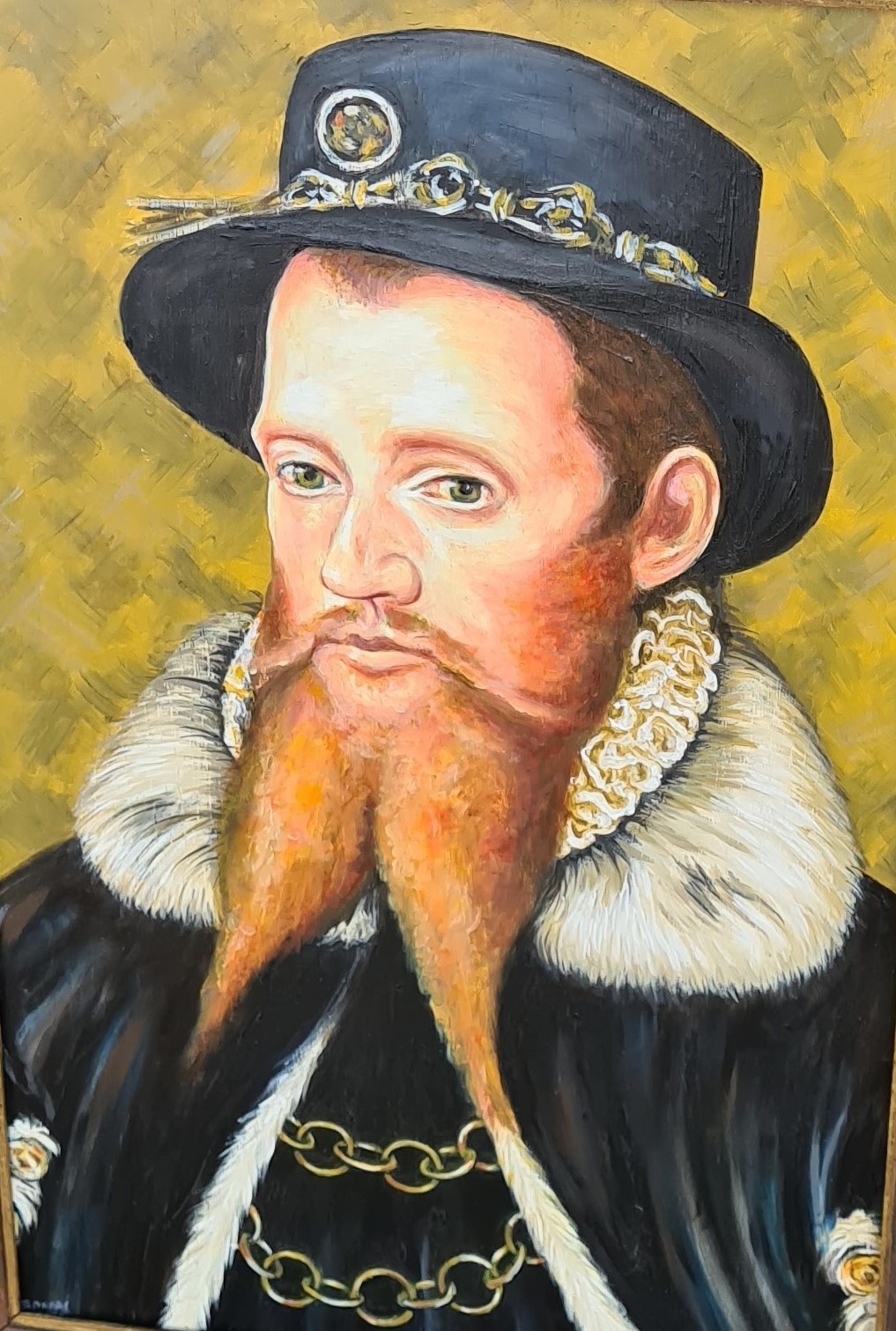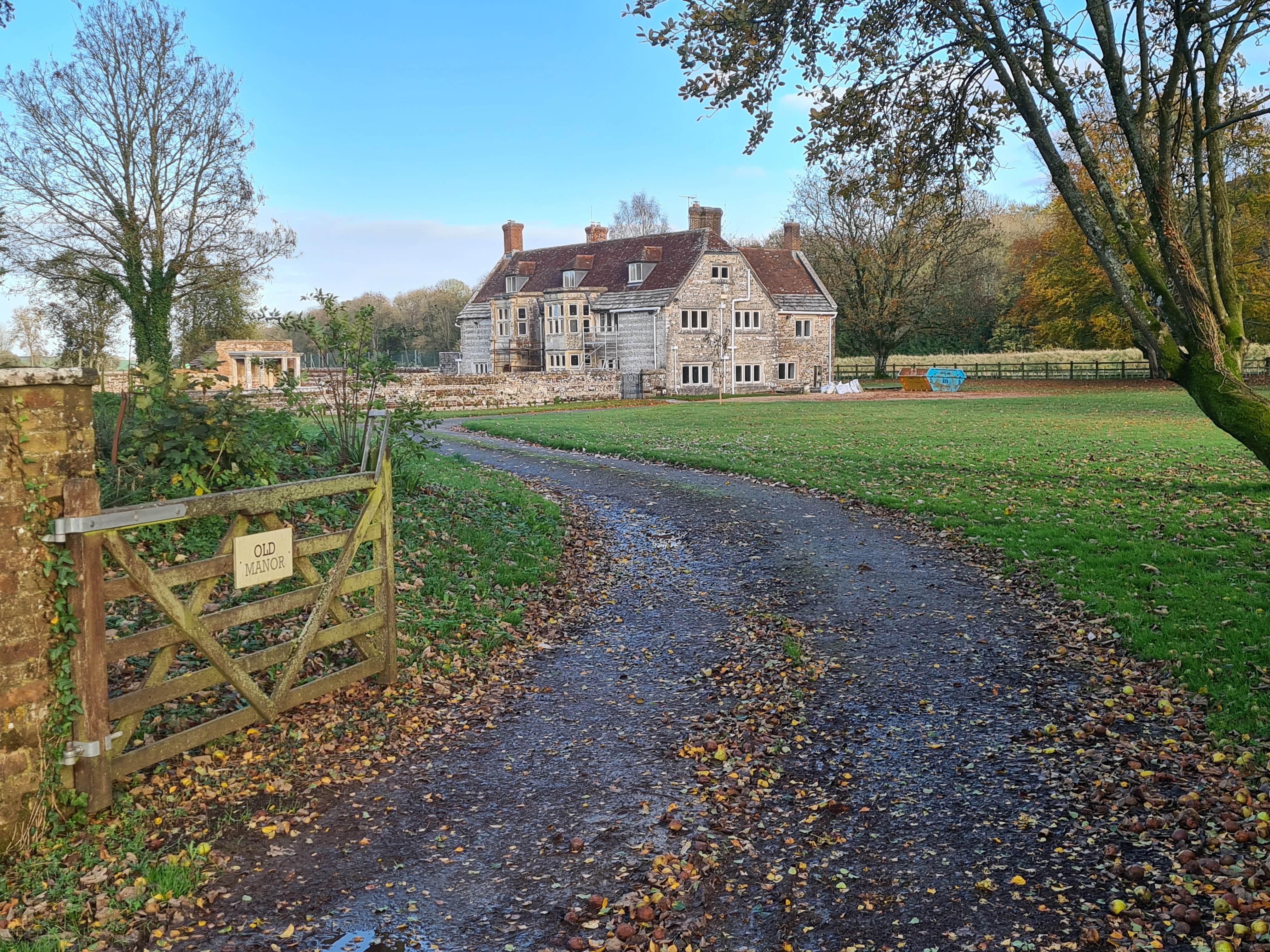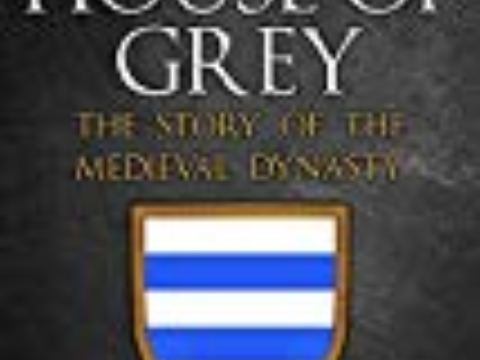The Four Martyn Sisters of Athelhampton
Tragedy and Wealth in Tudor Dorsetshire
Chapter 4 : Jane's Tragedy
If Jane ever had plans to enter a convent, they had been abandoned by the early 1580s, when she met and married Chidiock Tichborne, from across the county boundary to the east, in Hampshire. We know from a contemporary portrait that he had a striking ginger beard that divided into two parts, angled away from one another in a kind of upside-down V. We also know that he was capable of writing beautiful poetry.

Chidiock, like Henry and Thomas, came from a modest Catholic family, but his relatives were more militant, or perhaps more careless, in their religious practices. His father was imprisoned for contravening the increasingly tight laws against visible practising of the old religion, and he himself had been briefly arrested, due to his involvement in the import of illegal Catholic relics from Italy. Around the time of the marriage, he also became a close associate of a priest, Father Ballard, who administered Mass to him and Jane on many occasions.
Another difference between Chidiock and his brothers-in-law was that he lacked even the modest estates that they possessed. So, he and Jane spent the first part of their married life with his family in Hampshire, before coming to Fittleford for an extended stay with Frances and Thomas. Clearly these were temporary arrangements, and in Spring 1585 the young couple started renting Almer Manor, a fine newly-built house which, as with the other married sisters’ homes, was within an easy ride of Athelhampton.

Their landlord was Sir Christopher Hatton, a well-known Elizabethan figure who at the time stood high in the Queen’s favour. Sir Christopher had considerable land-holdings nearby, including Brownsea Island in the sheltered bay outside Poole harbour, and Corfe Castle. He was also Commander-in-Chief of the Queen’s Yeomanry, and it was in this force that Chidiock took a position in the Spring of 1586.
In the months that followed, Chidiock became embroiled in one of the best-known, and most tragic, episodes of Tudor history. He started meeting Anthony Babington, Father Ballard, and others in London regularly, and together they appear to have plotted to assassinate Queen Elizabeth and put Mary Queen of Scots on the throne – the Babington Plot. The group became known to Francis Walsingham, the Queen’s spymaster; the plotters were arrested, and after interrogation were hung, drawn and quartered at St Giles-in-the-Fields in London, in September.
night before he died, Chidiock, awaiting execution in the Tower of London, sent a famous poem to his spouse: My Prime of Youth is but a Frost of Cares. Mysteriously, the poem is addressed to Agnes as his wife, even though we know from numerous contemporary sources, including the official interrogation of his servant, that he was married to Jane Martyn. The unravelling of this mystery seems simple enough: in Tudor times, Agnes was often used as a nickname or term of endearment for very devout women; and it was pronounced in a way that made it sound similar to Jane. So Agnes was most probably a private name that the young husband used for his wife.
Chidiock was not the only member of the extended Martyn family to be arrested in connection with the Babington plot. Henry Brune was also taken to the Tower and kept there until October, before finally being allowed back to Lydlich. By this time, the case against Mary that was to lead to her execution was well advanced, so maybe the authorities felt no need to condemn another plotter. Moreover, by sending him home they may have hoped to build the loyalty of the Martyns as badly-needed allies in a county that had a superb natural harbour at Weymouth and was clearly likely to be in the front line in the expected battle against seaborne Spanish forces, which materialised as the Armada in 1588.
